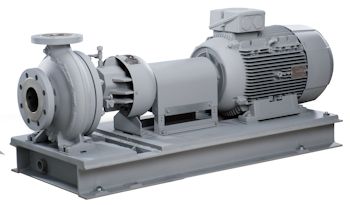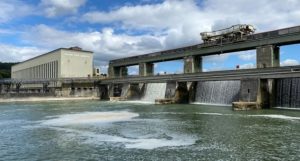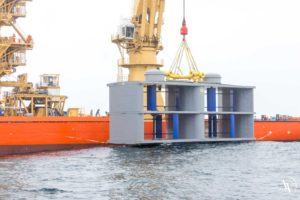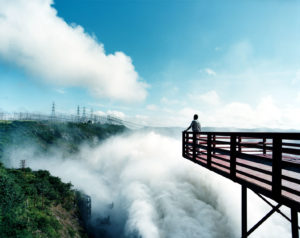Hot Water Recirculation Pump Without External Cooling
Early in June 2014, KSB will launch a new generation of hot water recirculation pumps for large industrial heating systems as well as forced circulation boilers and district heating systems.

HPK-L, the new hot water recirculation pump, can handle hot water of up to 400 °C without external cooling. (Photo: KSB Aktiengesellschaft, Frankenthal, Germany)
The horizontal, radially split single-stage volute casing pumps feature a back pull-out design. Their ratings and dimensions comply with ISO 2858; with regard to handling hot water, organic or synthetic heat transfer fluids, they also meet the technical requirements of ISO 5199.
The HPK-L pump series, which comes in 49 different sizes, can be operated at temperatures of up to 400 °C without any additional cooling devices, and is designed for pressure classes of up to PN 40. This temperature resistance is achieved by means of a generously sized heat barrier which separates the pump set’s hot operating section from the air-cooled mechanical seal chamber.
A fan impeller fitted at the pump shaft end generates a continuous flow of air between the large cooling fins surrounding the mechanical seal chamber. A service life of up to 25,000 operating hours is ensured by large, product-lubricated silicon carbide plain bearings fitted close to the impeller and by two angular contact ball bearings in back-to-back arrangement sealed on both sides and mounted at the “cold” end of the shaft.
The patented venting profile, VenJet, makes sure that the gas contained in the fluid is separated near the mechanical seal and that it collects in the venting chamber. The pump’s design provides space for the installation of double mechanical seals in tandem arrangement without necessitating any changes to the lengths of the cooling distances in the pump.
In this configuration, a quench fluid is provided between the two mechanical seals. It prevents thermal degradation of the fluid handled at the sealing clearance in cases of leakage at the inboard mechanical seal, and discharges the heat transfer fluid into the quench system. This enhances the system’s operating reliability, especially when using synthetic heat transfer oils of up to 400 °C and with vapour pressures of more than 1 bar.
Discharge-side casing wear rings and drilled holes in the impellers help to reduce the axial thrust and thus the loads on the bearings. With 49 pump sizes on offer, a hydraulic system allowing the pump to be operated close to the best efficiency point (BEP) can be selected for almost every application. The pump manufacturer will also make sure to match every impeller to the required operating point before the pump is supplied to the customer.
Source: KSB SE & Co. KGaA







